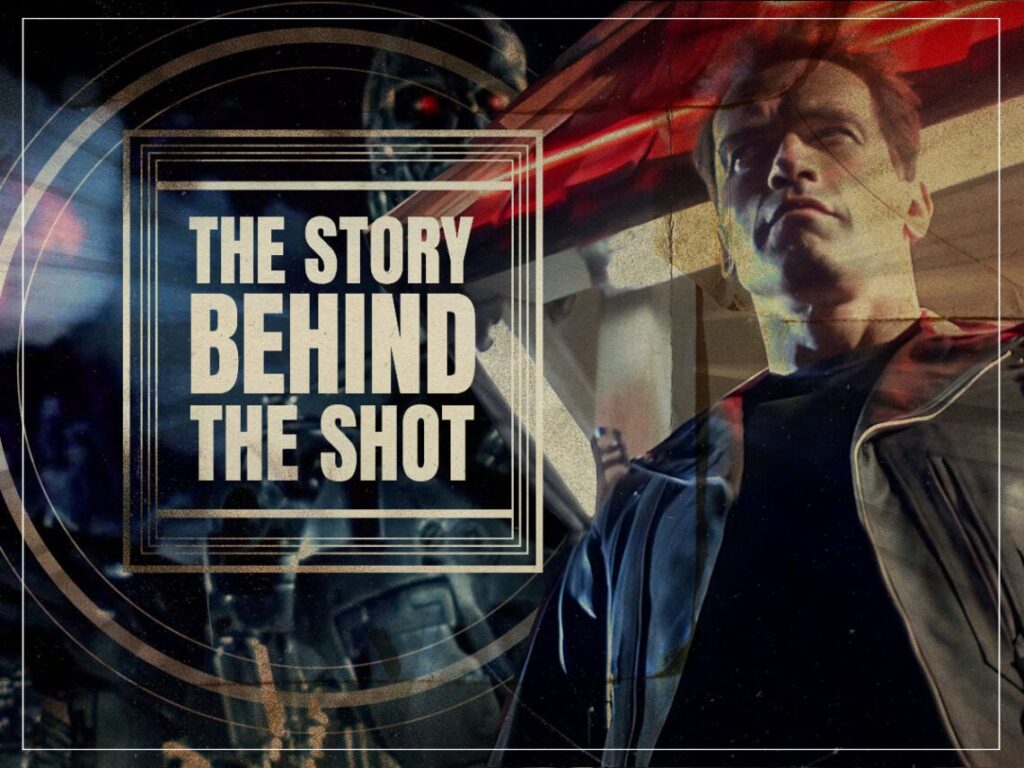The Story Behind The Shot: ‘Terminator 2’ ushers in the CGI revolution in spectacular style
 Posted On
Posted On
(Credits: Far Out / Tri-Star Pictures)
James Cameron has never met a technological challenge he couldn’t match, but for what it meant to his career and cinema at large, it’s hard to look beyond the action-packed masterpiece Terminator 2: Judgement Day as the single most definitive movie he’s ever going to make.
It felt like the culmination of his life’s work up to that point, and the seismic changes it instigated across the industry have defined him ever since. The original Terminator was a sci-fi classic, Aliens proved he could make a worthy successor to an all-time genre flick, and The Abyss indicated that he would be at the forefront of the CGI revolution.
Put all three strands together, and that’s the DNA of Terminator 2 in a microcosm. His previous two forays into seminal sci-fi had heaped huge pressure on Judgment Day to succeed, and those expectations were only increased by its status as not only the single most expensive production in history but a potential barometer of just how close to the digital overhaul of filmmaking Hollywood really was.
To put those rapid advances into perspective, the game-changing CGI in The Abyss required a team of six who spent six months working on 75 seconds of footage. Terminator 2 enlisted four companies working on specially designed computer systems, with 35 people contributing to over 40 shots over a ten-month period at a cost of $17 million, almost three times as much as the first Terminator had cost in its entirety.
Cameron didn’t even have a backup plan in place should his ambitious vision fail to be realised, which meant that quite literally everything rested on the pioneering visual effects artists accomplishing the task they’d been set. Fortunately, they were more than up to the job, with Terminator 2 succeeding on an artistic, visual, and technical level to take its place as one of the greatest action movies, sci-fi films, and sequels that’s ever going to be made.
Robert Patrick’s T-1000 appears in plenty of scenes in various forms, but in terms of Terminator 2‘s mission statement, the exhilarating escape that finds Linda Hamilton’s Sarah Connor freed from psychiatric holding by Arnold Schwarzenegger’s titular cyborg is the pinnacle. It’s everything Cameron wanted his film to be, and as well as reiterating in no uncertain terms that the future of cinema was here, it continues to hold up more than 30 years later as a slice of top-tier blockbuster entertainment.
The unstoppable villain slips through a barred door as if it wasn’t even there, gets its head blown clean in half by a shotgun blast, drops down from above an elevator as an amorphous blob, seamlessly shapeshifts from CGI into Patrick to chase down the heroes’ escape vehicle, and turns its arms into razor-sharp appendages of certain death before finally being shaken off.
In the space of just a few minutes, everything changed. It was a statement of intent from Cameron and Industrial Light & Magic, who’d painstakingly worked on every single iteration of the T-1000 – liquid metal, a featureless humanoid, something semi-reflective of the actor playing the role, and a full digital replica of Patrick – and seamlessly deployed every single one of them in a breakneck sequence that thrilled and delighted to such an extent it became easy to overlook that it was history in the making.
There are plenty of iconic moments throughout Terminator 2, but the hospital escape is the perfect embodiment of how it permanently altered the landscape. The CGI might have been revolutionary, but Cameron never treats it as a shiny new toy, instead using it to serve and enhance the story being told. The action genre has rarely been better, and cinema itself has never been the same since.
[embedded content]
Related Topics


